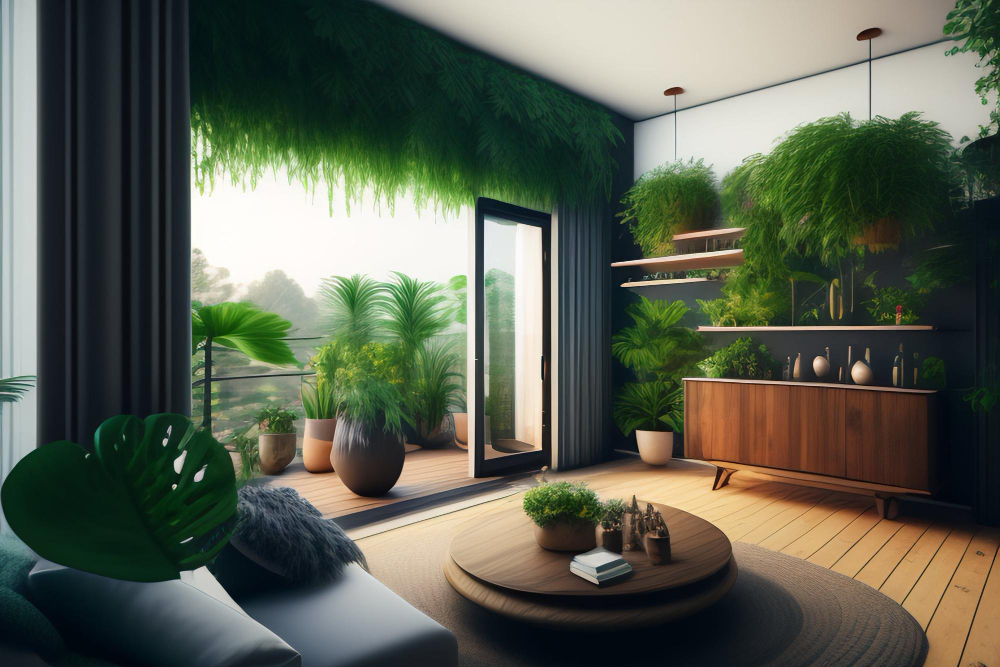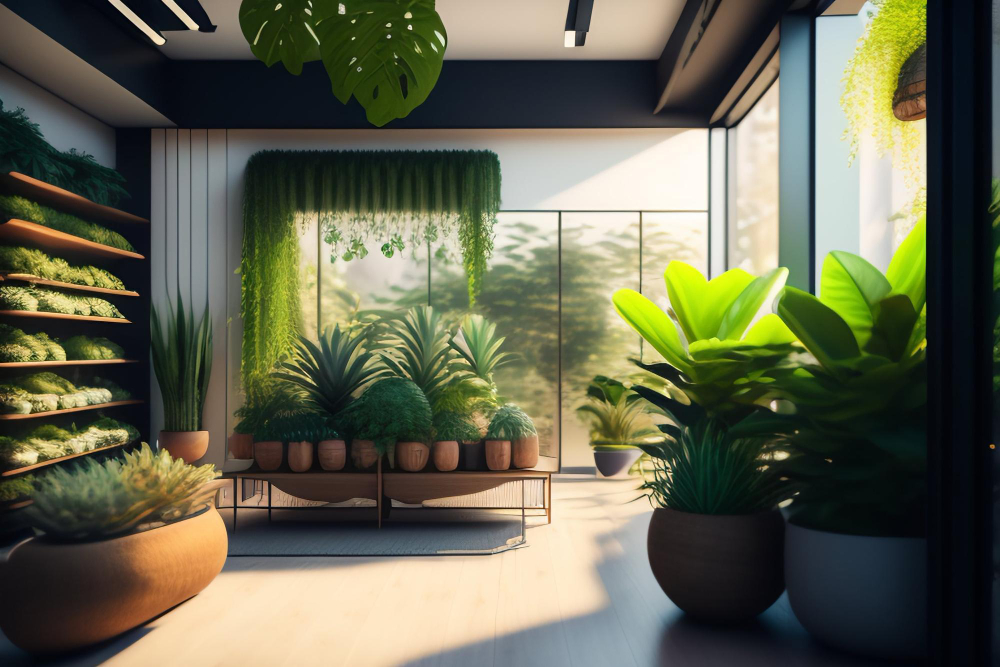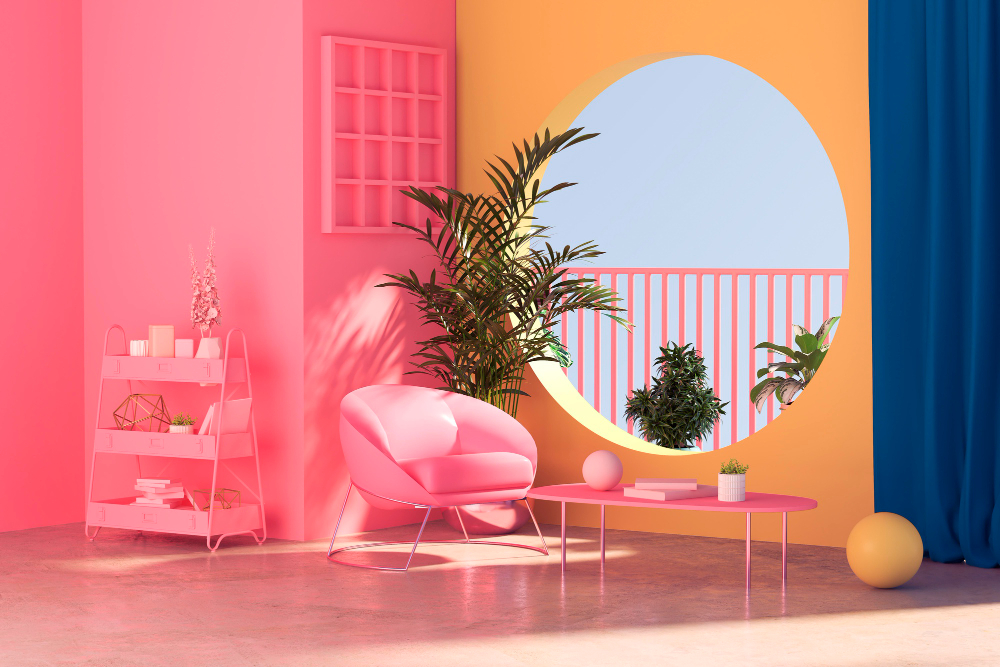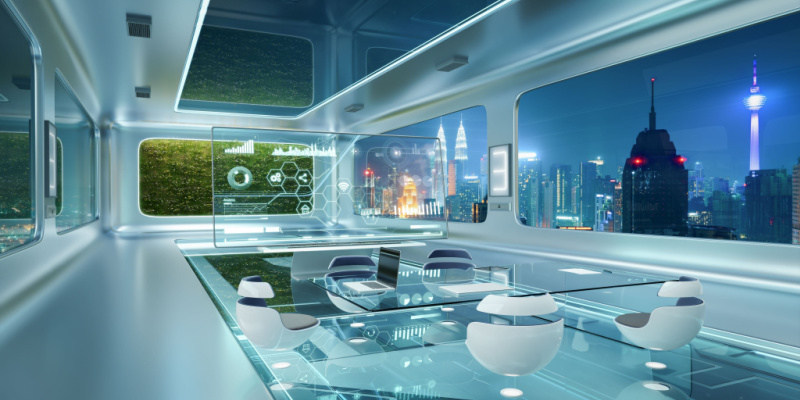In the ever-evolving world of interior design, innovation is the driving force. As we look ahead, we see a fascinating blend of sustainability, technology integration, biophilic design, and multifunctional spaces shaping the interiors of tomorrow. Let’s delve into the exciting trends that will define the future of interior design.
Sustainability Takes Center Stage : Interior Design
Sustainable design is no longer a trend; it’s a necessity. Interior designers are increasingly embracing eco-friendly materials that minimize environmental impact. From recycled materials to upcycled furniture, sustainability is woven into the fabric of modern interiors. Imagine walls adorned with reclaimed wood, floors made from recycled glass, and furniture crafted from repurposed materials. These choices not only reduce our ecological footprint but also infuse spaces with character and authenticity.

Technology Integration
The future of interior design is intertwined with technology. Smart homes are becoming commonplace, and designers are seamlessly integrating tech features into our living spaces. Imagine voice-controlled lighting, automated window treatments, and furniture with built-in charging stations. Augmented reality (AR) and virtual reality (VR) are transforming how we visualize and experience interiors before they even exist. By pre-visualizing the future, AI is taking interior design to a new level, playing with the integration of disruptive materials that propose a new way of imagining the future.

Biophilic Design
Our innate connection to nature inspires biophilic design. Bringing the outdoors in, designers incorporate natural elements like living walls, indoor gardens, and organic textures. Imagine a serene bedroom with a moss-covered accent wall or a sunlit reading nook surrounded by potted plants. Biophilic design not only enhances aesthetics but also promotes well-being by reducing stress and improving air quality.

Multifunctional Spaces
As urban living spaces shrink, versatility becomes crucial. Furniture and layouts are adapting to accommodate various functions. Picture a sofa that transforms into a dining table or a bed that folds into the wall during the day. Multifunctional spaces maximize utility without compromising style. Whether it’s a compact studio apartment or a spacious loft, adaptability is the key.

Materials Matter
Interior materials are evolving rapidly. Here are some emerging materials to watch out for:
- Graphene-Infused Surfaces: Graphene, a super-thin material, is making its way into interiors. It’s incredibly strong, lightweight, and conducts heat and electricity efficiently. Imagine countertops that charge your devices wirelessly or walls that regulate temperature.
- Biodegradable Plastics: Designers are exploring bioplastics derived from renewable sources. These materials break down naturally, reducing plastic waste. Imagine chairs made from corn-based plastics or lampshades from mushroom mycelium.
- Self-Healing Materials: Imagine a scratch on your wooden table disappearing magically. Self-healing materials repair minor damage automatically, extending the lifespan of furniture and surfaces.
- Living Materials: Bioengineered materials like mycelium (the root structure of fungi) are gaining traction. They’re sustainable, lightweight, and can be molded into various shapes. Imagine lampshades grown from living organisms.

Conclusion
The future of interior design lies at the intersection of creativity, sustainability, and technology. As we embrace innovative materials and rethink spatial possibilities, our homes will become more functional, beautiful, and harmonious. So, whether you’re designing a cozy apartment or a sprawling villa, keep an eye on these emerging trends. The canvas is yours—paint it with sustainable, tech-savvy, and nature-inspired strokes!
